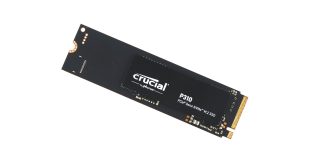Memory giant Corsair, made its name when it stumbled upon the idea that systems which can use 2 modules of memory (at the same time), would benefit if the memory itself was ‘twinned' before sale. TwinX was born and Corsair sales went into overdrive. Now ADATA engineers claim to have created a superior SSD drive by hand-picking the NAND memory inside. KitGuru buys in salt and vinegar, ready to investigate these chip claims.
SandForce, in its wisdom, allowed SSD manufacturers to use a wide variety of memory in Solid State Drives, by allocating up to 14% of the memory found as ‘spare' – to enhance stability. SandForce calls this technology RAISE (Redundant Array of Independent Silicon Elements) and it can work wonders when cheapo memory is used.
According to SandForce engineers, RAISE writes data across multiple flash die to enable recovery from a failure in a sector, page or entire block – just like the concept of multi-drive RAID used in disk-based storage, but RAISE only requires a single drive. Clever.
For comparison, Intel, Marvell etc only use 7% of the available capacity for this kind of ‘safety zone'.
So what happens when you use high quality memory? Well, you have just wasted 7% of your drive's capacity on a safety area that won't be used. Think ‘Additional cost/usefulness of installing seat belts in the boot of your car'.
Sounds great, extra capacity WITH the speed advantages of SandForce controllers, so what will excite customers enough to buy? ADATA has made an improvement on the branding as well.
Bless their cotton socks, but ADATA can be a little dull at times. While the products themselves are generally very good, the company's naming strategy has been woeful.
Example?
If they created an SSD design in May 2011, then it would be called the 511. Nice.
Now it seems that has changed and the company has injected a little SeX into its nomenclature. It's new range is called XPG (Xtreme Performance Gear) and includes products like the SX 9 oh oh – which makes us feel dirty and we love it.
There's also a slightly faster/more durable version available under the range name SX910.
Both of these ranges have drives that come in 64GB, 128GB and 256GB – with the top end being a 512GB drive (traditionally this would only have offered 480GB with SandForce).
The SX 900 version will take it in at 465MB/sec and blow back at 540MB/sec – and that will cost you just £319 with a 3 year warranty. Push on a little bit harder to the SX 910 and you will get a 5 year warranty with write speeds up to 530MB/sec and reads at 550MB/sec.
Having paid their money, Overclockers has the first drop of these large capacity/long warranty drives, priced as follows, SX900 (3 years with 465/540): 64GB @ £59, 128GB @ £85, 256GB @ £159 and the monster 512GB @ £319
Move up to the SX910 (5 years with 530/550) and we have 128GB @ £113, 256GB @ £259 and the larger 512GB @ £439
ADATA says that the reason why it's able to offer a long warranty 512GB over the traditional warranty 480GB drive, is that the NAND memory used has been carefully selected from the top manufacturers – so it's more reliable.

KitGuru says: In the memory module market, globally, ADATA is number two behind Kingston. Gaining the number 2 spot for SSD will be substantially harder, but if ADATA is to have any chance, then it needs to innovate – so the SX900/SX910 is a step in the right direction.
Comment below or in the KitGuru forums.
 KitGuru KitGuru.net – Tech News | Hardware News | Hardware Reviews | IOS | Mobile | Gaming | Graphics Cards
KitGuru KitGuru.net – Tech News | Hardware News | Hardware Reviews | IOS | Mobile | Gaming | Graphics Cards



One comment
Pingback: Do 480GB SandForce SSDs leave you feeling unsatisfied? | KitGuru | All About Solid State Drives (SSD)